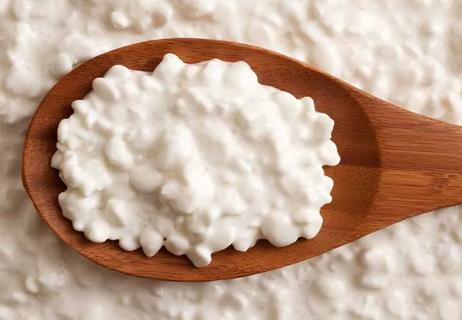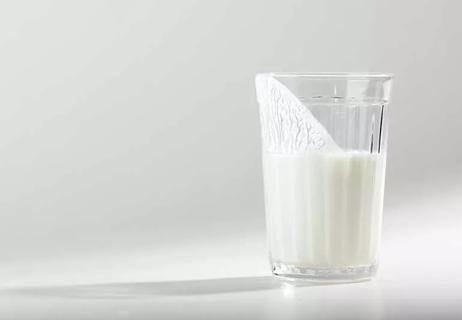There’s definite nutritional value in chocolate milk, but the added sugar and calories can be a concern

Dairy milk carries a well-earned reputation as a nutritional powerhouse. So, if that’s a healthy choice, can the same be said of chocolate milk? A little extra flavor can’t erase all that dietary goodness, right?
Advertisement
Cleveland Clinic is a non-profit academic medical center. Advertising on our site helps support our mission. We do not endorse non-Cleveland Clinic products or services. Policy
The answer isn’t quite “brown” and white, explains registered dietitian Julia Zumpano, RD, LD.
Chocolate milk is indeed loaded with essential nutrients that “does a body good,” to borrow an old marketing slogan. But sweeteners that add a certain yumminess to chocolate milk also bring extra sugar and calories — and that’s not always ideal.
So, is chocolate milk good for you? Let’s break it down.
Looking for a reason to pour yourself an ice-cold glass of chocolate milk? Here are a few.
Milk in general checks a lot of nutritional boxes, containing 18 of 22 essential nutrients your body needs. It’s well-known for being chock-full of calcium and protein, of course, but that’s just the start of the list.
Milk (and chocolate milk) is also naturally high in:
As a bonus, most milk products sold in the United States are also fortified with vitamin D.
“The nutrients and vitamins in milk — whether it’s regular or flavored — benefit your body from head to toe,” says Zumpano. “A lot of these are ‘shortfall nutrients,’ too, meaning most of us don’t get enough of them in our diet.”
That’s especially important for kids, who seem to REALLY like chocolate milk. (No surprise there. Chocolate does taste pretty darn good, after all.)
Advertisement
Studies show that schoolchildren are more likely to drink milk at lunch when chocolate milk is on the menu. In fact, researchers say that more than two-thirds of the milk consumed during school lunches is flavored milk.
Chocolate milk might not be what you think of when it comes to sports drinks — but maybe it should be, given its ability to:
Study after study shows that a simple jug of store-bought chocolate milk produces results similar or even superior to those neon-colored sports drinks engineered for athletic performance.
“Chocolate milk can be a good, convenient and inexpensive choice as a recovery drink, although it’s not ideal for those who don’t tolerate milk well or those trying to limit added sugar intake,” notes Zumpano.
Chocolate milk is best used as a recovery drink after more intense workouts or endurance activities. It’s not as helpful (or necessary) after shorter exercise sessions.
While there are obvious benefits to drinking chocolate milk, most of those are linked to it being a milk product. The added chocolate flavoring doesn’t exactly enhance the healthiness of the drink.
Think of it like eating a chocolate-covered strawberry. Sure, you get the nutritional benefits of the fruit — but overall, it’s not the same thing as just eating the fruit on its own.
“You don’t lose the nutritional benefits of milk in chocolate milk,” clarifies Zumpano, “but you are adding elements that make it a less-healthy choice.”
That includes sugar. A cup of 1% low-fat chocolate milk contains more than double the amount of sugar found in a cup of regular low-fat 1% milk, according to nutritional data from the U.S. Department of Agriculture.
Ounce for ounce, chocolate milk is equal in sugar content to soda drinks.
“Day to day, most people tend to consume too much sugar, which is not good for your overall health,” reports Zumpano. “Diets high in sugar can increase your risk of developing conditions like Type 2 diabetes, heart disease and obesity.”
That extra sugar also means added calories, which can contribute to weight gain.
Let’s start with this: Drinking regular milk — the plain ol’ white stuff without added flavoring — is typically your healthiest option.
But if you just have to fill your glass with chocolate milk, Zumpano offers these tips:
Advertisement
Chocolate versions of dairy-free milk alternatives, like almond milk or soy milk, are readily available. Choosing unsweetened options will cut down on the added sugars and calories. Or consider a make-it-yourself option.
There’s a lot to like about chocolate milk, which offers the nutritional value of milk with a little extra for your taste buds. Creating that dessert taste, however, makes it a less healthy option than regular milk.
“While chocolate milk can be an appealing beverage, use it in moderation or for a recovery drink after an intense workout,” advises Zumpano. “If you choose to indulge in it more often, consider making it yourself to reduce the sugar and additives.”
Advertisement
Learn more about our editorial process.
Advertisement

Medications, dietary changes, abdominal massage and physical activity can all help you start to feel better

Experiment with numerous dairy alternatives or try taking a lactase enzyme medication before you eat dairy

Lactose is difficult to breakdown and digest because of its complexity

Drinking unpasteurized milk can cause issues like nausea, diarrhea, vomiting or, in some cases, serious illness

Be sure to check the labels of common foods like canned tuna, bread, hot dogs and chocolate

This dairy product can help you lose weight, manage blood sugar and strengthen bones

Rich in calcium and protein, milk has 18 of 22 essential nutrients that your body needs

A superfood, kefir is loaded with vitamins, minerals and nutrients

The best parenting style balances enforcing rules and showing plenty of love

Tips include cutting back on sugar, focusing on exercise and managing stress

It can be harder to let go when you’ve invested time, energy and emotions — but it might be the healthier choice long term